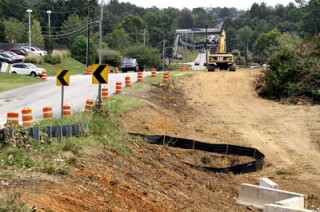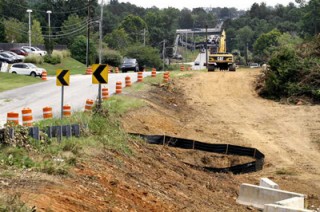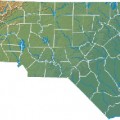Eminent Domain, Land Condemnation, And What They Mean
What is Eminent Domain?
In the United States, local governments use Eminent Domain
and land condemnation to acquire property for public use. The Fifth Amendment of the U.S. Constitution allows the government to take private property for “public use” so long as landowners are fairly compensated.
Eminent domain laws vary from state to state and city to city because land condemnation is a civil process unique to each jurisdiction. Knowing your rights beforehand can help you understand how eminent domain impacts you. You’ll understand the steps you can take in response if your land is threatened by an eminent domain declaration or if you feel you haven’t received a fair compensation.
What Is Eminent Domain?
The term “eminent domain” is used to describe the government’s legal right to seize privately owned land and put it to public use. According to the Fifth Amendment, the government cannot seize private property without compensating the owners adequately.
In short, eminent domain is the government’s right to acquire land for public use. Any governmental entity (federal, state, county, or city) has the power of eminent domain, but usually only for urban renewal like a new road or railway.
Eminent domain laws are meant to serve two important functions:
- First, they allow governments to build infrastructure that the public needs but can’t feasibly build on its own (such as a railway or road that goes through private property).
- Second, they provide just compensation to a property owner who loses their land to eminent domain.
The government cannot just take your land and do what they want with it. They must have a legitimate reason for doing so, and they have to compensate you for it.
How is Eminent Domain different than Land Condemnation?
Although related, it’s important to note the difference between the two. We discussed that eminent domain laws are meant to provide compensation to landowners. But in the case of land condemnation, no compensation is given.
Land condemnation only happens when eminent domain can’t be used. In other words, it’s when the federal government doesn’t have the right to take your land. Land condemnation is used when the federal government takes your land immediately as opposed to at a future date. Eminent domain is meant to be used when the project will have long-term benefits for the general public. Land condemnation, on the other hand, is done to address an immediate issue, such as an emergency, a public safety, or a public utility issue.
What is the Purpose of Eminent Domain?
Eminent domain is the government’s right to take private property for public use. This may include land for public roads, schools, highways, utilities like water or electricity lines, or even public parks. Governments can only take private property via eminent domain if the property owner has agreed to a “condemnation” or a “conditional sale” of their land.
The Fifth Amendment of the U.S. Constitution allows for this practice so long as landowners are fairly compensated for giving up their property rights.
The U.S. Supreme Court described eminent domain in a 1905 case as “a function both legitimate and necessary.” Though it may sound ominous, eminent domain is actually a critical part of the nation’s infrastructure.
How Does Eminent Domain Work in North Carolina?
Local governments must provide clear guidelines for eminent domain. In North Carolina, for instance, local governments must follow state and federal guidelines.
Specifically, the North Carolina General Statute §160A-343 states that all governing bodies (local governments) must follow the North Carolina Eminent Domain Code. Here is the process of eminent domain, including the following steps:
- Identification of Public Purpose – The governing body must identify the purpose of the project they are attempting to build. This should be clear and concise, and the land acquisition should be one that benefits the public as a whole. After all, the main purpose of the project is to allow the condemning authority to take the whole property.
- Declaration of Taking – If the governing body decides that they need to use eminent domain to achieve their goals, they must declare a taking. This means that the government is seeking to acquire the property for the stated public use.
- Notice of Intent – After declaring a taking, the government must then provide notice to the property owners. This involves notifying them of their intent to take the land and being transparent about the reason why they are doing so.
- Agreement on Price – Once the government has declared taking and given notice to the property owners, they must then attempt to find a “just compensation” price for the property. This process is also known as appraisals.
- Legal Process – If the property owners do not agree to the compensation, the state then moves to a legal process. This is the process that allows the government to take the property through eminent domain.
When Can a Government Use Eminent Domain?
A United States government, either federal, state, or local, can use eminent domain when acquiring land for public projects that are necessary or for economic development. This means the government must show that their project is necessary and that it benefits the public.
The government must also show that taking the land is a “last resort” after other efforts to acquire the land have failed. If the government initiates eminent domain for highway construction, for example, a road expansion or a new bridge may qualify as “public purposes.”
However, if local officials plan to build something deemed unnecessary, then there could be opposition.
Types of Property That Can Be Condemned
Government officials can condemn residential and commercial land (private land), as well as industrial properties.
Though governmental authority can condemn any type of land, they generally focus on personal property such as residential, commercial, and industrial property. These properties are easier to acquire. Partial taking of such property is a little more complicated as there is a lesser chance for just compensation.
Most government entities don’t have the resources to purchase large tracts of undeveloped land. If the government agency condemns your entire property for a public project, you can expect to receive a letter informing you of the action. This letter is typically known as a “condemnation notice.”
Limitations on the Use of Eminent Domain in North Carolina
Public Use
The first and most important limitation on the use of an eminent domain is that the land must be used for a public purpose. This means that the land must be used for something that benefits the general public as a whole.
There are two important eminent domain cases that deal with public use. The first is the case of Kellet v. City of Raleigh. In this case, Raleigh wanted to build an airport on land that Kellet owned. The city claimed that the airport’s purpose was for public use because it would provide jobs for the community. The court disagreed, ruling that the airport was meant to benefit private airlines. The second case deals with the need to show there is no feasible alternative.
Feasible Alternative
The second limitation on the use of an eminent domain is that the government must have no feasible alternative to using eminent domain. The government cannot just take property and build a road on it because they want to build a road on it. They must prove that they cannot build that road in another location.
This was the case of the City of New London v. Sousa. The city wanted to build a large development on waterfront property. The owner of that property refused to sell his property to the city, so the city used eminent domain. The court ruled that the city did not have a feasible alternative for building the development. They also did not prove that building the development in a different location would not have generated the same economic benefits.
Compensation for Condemned Property in North Carolina
If the government uses eminent domain to take your land, they must compensate you for it. The amount of compensation varies depending on the value of the land. If the land is a home, then the government must pay the fair market value of the home.
This can be more or less than what you paid for it. If it’s less than you paid, you can even refuse the offer.
If the land is not being used as a home, then the government must pay the fair market value of the land. This can be anywhere from $2 to $50 an acre or more. In many cases, the government will also have to pay for any improvements that have been made to the land.
How to Respond If You Receive an Eminent Domain Letter
If you receive a condemnation letter, the government has already initiated the eminent domain process. You can respond to the government in one of three ways: You can negotiate a higher price, you can contest the action, or you can abandon your property.
Negotiate a Higher Price
If you receive a letter offering you fair market value for your land, you can negotiate a higher price. Remember, you are in the best position to determine the value of your land. City officials have a vested interest in acquiring your land, so they may offer you a relatively low price.
Contest the Action
If you believe the government’s assessment of your land’s value is too low, you can contest the action. You can also contest the action if you believe the project does not qualify as a “public use” or if you don’t want to sell your land at all. In order to contest the action, you’ll likely need to hire a lawyer and file a lawsuit in court.
Abandon Your Property
You can abandon your property and walk away from the process. If you choose to abandon your land, you’ll likely receive a “quit claim deed” from the government. This is essentially a document stating that the government owns the land.
If you’re served with an eminent domain action, you should consult a lawyer and review your offer from the government.
Land Acquisition and Condemnation Process for Public Works
If the government plans to acquire your land, it will usually initiate the process by sending you a letter offering you a “conditional sale” of your property. Once you sign the agreement, the government will send you a “notice of intent to acquire.”
This is a 10-day letter that indicates the government’s intent to acquire your land. If you don’t respond to the letter or sign a waiver, the government can issue a “plain and valid” eminent domain action. This means the government has obtained the proper authority to acquire your land.
The government then obtains a “final condemnation order” from a court judge. This order authorizes the government to acquire your land through eminent domain.
You may receive a “notice of appraisal” or “notice of intent to appraise” at some point during the process. This is a letter informing you that the government plans to hire an appraiser to determine the value of your land.
You may also receive a letter requesting that you sign a “consent to appraisal.” This letter is essentially a waiver allowing the government to appraise the value of your land. If the appraisal turns out to be less than what you initially received in the conditional sale, you can still negotiate a higher value.
Final Words: Knowing Your Rights Is Key
Eminent domain laws provide a fair and transparent process for governments to take private property. Everyone understands that government’s need to build roads and railways, but they must compensate landowners for the value of the property.
Eminent domain laws are a two-way street: The government gets to build something that benefits the public, and the public gets to use a new road or railway.
If you receive a letter from the government showing they plan to take your land, contact a lawyer. Your government’s land acquisition process can take years to complete. You can often navigate the process more easily if you know your rights.
You need an NC land condemnation attorney when faced with the dilemma of the government wanting your property.
Eminent Domain Lawyer in Raleigh, NC
Kirk, Kirk, Howell, Cutler and Thomas are your NC land condemnation attorneys when faced with an eminent domain case. For over 40 years, we have represented land condemnation cases all over North Carolina. Call us at 919-615-2473 or Contact us today for your free consultation.
Protecting your Privacy ~ Your privacy is our primary concern. At Kirk, Kirk, Howell, Cutler & Thomas, LLP., we understand the importance of protecting your privacy and will never share your contact information with a 3rd party. Contacting our law firm does not imply any form of attorney-client relationship.
Information presented on this website should not be construed as formal legal advice or the formation of an attorney-client relationship. Additionally, any email sent to Kirk, Kirk, Howell, Cutler & Thomas, L.L.P. or any of its lawyers at the email addresses set forth in this website will not create an attorney-client relationship.













